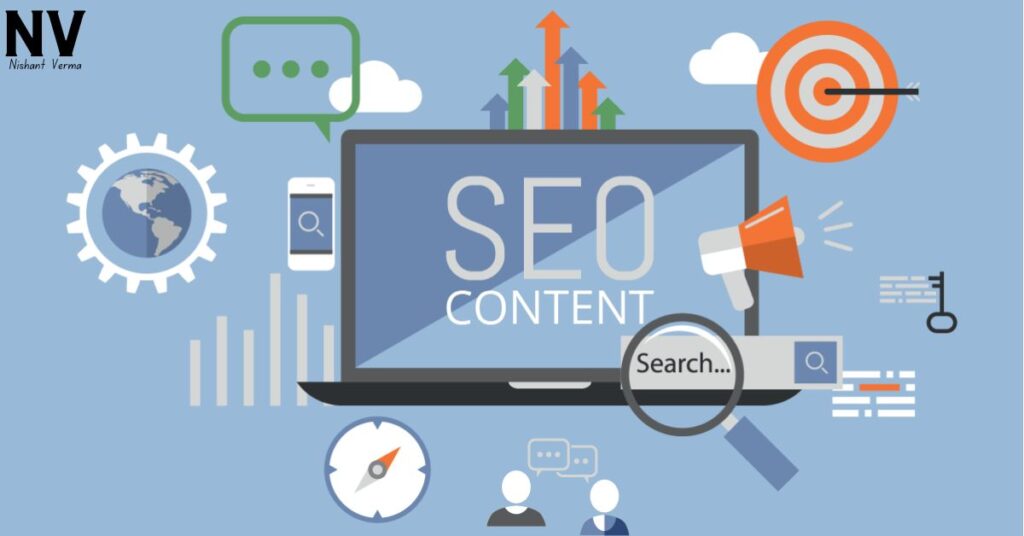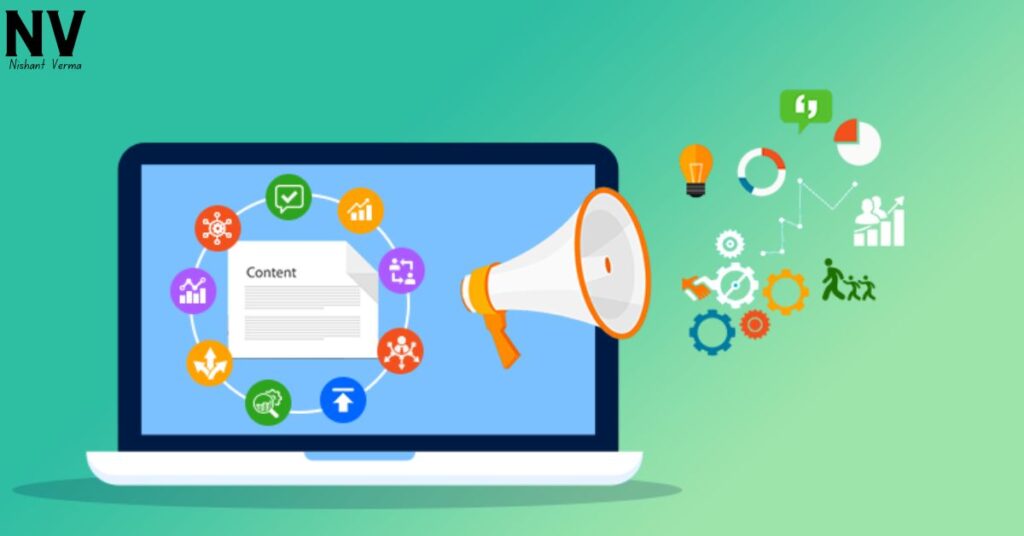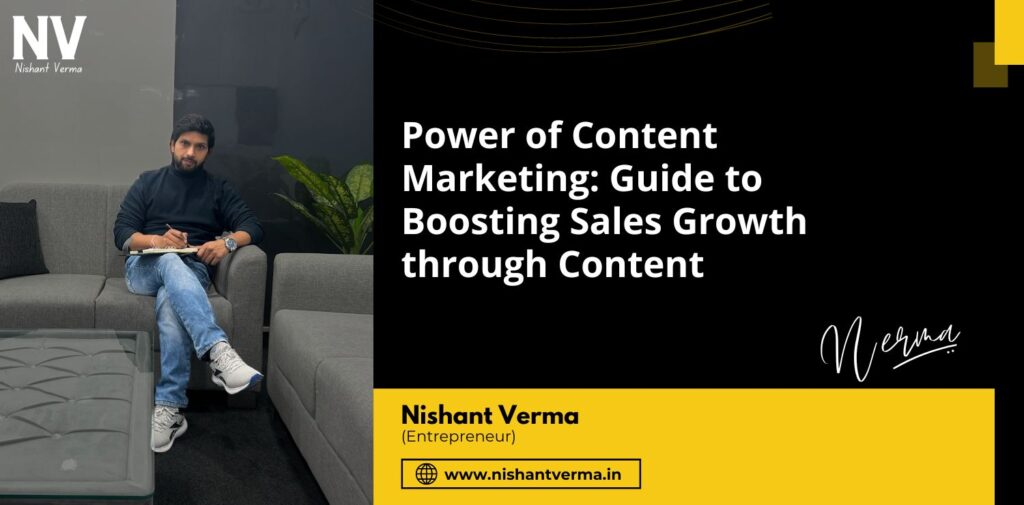In the digital age, where information is abundant, and attention spans are short, businesses need more than just advertisements to attract and retain customers. Enter Power of content marketing is a dynamic strategy beyond traditional selling to provide value and build lasting connections. In this article, we’ll explore the art of content marketing in easy and simple language, revealing how businesses of all sizes can harness its power to drive sales growth.
Section 1: Demystifying Power of content marketing
1.1 What is Content Marketing?
Content marketing is about telling a story, sharing valuable information, and connecting with your audience. It’s not just about selling a product; it’s about building trust and credibility by offering Content that educates, entertains, or solves problems.

1.2 The Essence of Content:
Content comes in various forms, including blog posts, videos, infographics, podcasts, and social media posts. The key is to create Content that resonates with your target audience, aligns with your brand, and adds value to the customer experience.
Section 2: Understanding Your Audience
2.1 Identifying Your Target Audience:
To create Power of content marketing that speaks to your audience, you must first understand who they are. Define your target demographic, their interests, pain points, and the platforms they frequent. This knowledge forms the foundation of your content strategy.
2.2 Creating Buyer Personas:
Develop detailed buyer personas representing your ideal customers. These fictional characters embody your target audience’s traits, preferences, and behaviours. Tailoring Content to these personas ensures relevance and resonance.
2.3 Listening to Your Audience:
Engage with your audience on social media, forums, and through customer feedback. Listen to their questions, concerns, and feedback to gain insights about your Power of content marketing creation. Addressing their needs builds trust and loyalty.
Section 3: The Sales Funnel and Power of content marketing
3.1 Aligning Content with the Sales Funnel:
Understand the sales funnel stages—awareness, consideration, and decision. Tailor your Content to guide prospects through each stage. For example, informative blog posts for awareness, case studies for consideration, and product guides for decision-making.
3.2 Attracting Attention (Awareness Stage):
Create attention-grabbing Content to introduce your brand and offerings. Blog posts, social media content, and videos can showcase your expertise, entertain, or provide valuable information, making your brand memorable.
3.3 Building Interest (Consideration Stage):
Transition to Content that deepens interest and consideration. Webinars, whitepapers, or comparison guides can help prospects explore your products or services more, positioning your brand as a viable solution.
3.4 Encouraging Action (Decision Stage):
In the decision stage, provide Power of content marketing that nudges prospects toward action. Testimonials, product demos, or limited-time offers can be powerful motivators, driving them to purchase or contact your sales team.
Section 4: Crafting Compelling Content
4.1 The Power of Storytelling:
Humans are wired to love stories. Incorporate storytelling into your Content to create an emotional connection with your audience. Share success stories, customer testimonials, or anecdotes that humanize your brand.
4.2 Valuable and Educational Content:
Become a valuable resource for your audience by creating educational Content. How-to guides, tutorials, and informative blog posts position your brand as an authority in your industry, fostering trust.
4.3 Visual Appeal:
Visual Power of content marketing is highly engaging. Use eye-catching visuals like infographics, videos, and images to convey information. Visuals break up text, making your Content more digestible and shareable.

Section 5: SEO and Content Marketing
5.1 The Role of SEO:
Search Engine Optimization (SEO) ensures your Content is discoverable by search engines. Use relevant keywords, optimize meta tags, and create high-quality, shareable Content to improve your website’s visibility in search results.
5.2 Keyword Research:
Identify the keywords your target audience will likely use when searching for products or information about your industry. Incorporate these keywords naturally into your Power of content marketing to enhance its searchability.
5.3 Quality Over Quantity:
While consistency is important, prioritize quality over quantity. Search engines value well-written, informative Content. Regularly update and refresh your existing Content to maintain its relevance and appeal.

Section 6: Content Distribution Strategies
6.1 Social Media Presence:
Leverage social media platforms to distribute and promote your Content. Share blog posts, videos, and other Power of content marketing to reach a broader audience. Use a mix of organic and paid strategies to maximize visibility.
6.2 Email Marketing:
Build an email list and regularly send out newsletters with your latest Content. Email marketing allows you to nurture leads, provide exclusive Content, and keep your audience engaged over time.
6.3 Collaborations and Partnerships:
Extend your reach by collaborating with influencers, industry experts, or complementary brands. Co-created Content distribution strategies can tap into new audiences and provide diverse perspectives, enhancing your overall value.
Section 7: Measuring Content Marketing Success
7.1 Key Performance Indicators (KPIs):
Define KPIs that align with your Power of content marketing success goals. Metrics like website traffic, social media engagement, conversion rates, and customer retention can provide insights into the effectiveness of your Content.
7.2 Google Analytics:
Utilize tools like Google Analytics to track and analyze website performance. Understand user behaviour, popular Content, and conversion paths. This data helps you refine your content strategy based on what resonates with your audience.
7.3 Customer Feedback and Surveys:
Directly seek feedback from your audience through surveys, comments, and reviews. Understand their preferences, challenges, and expectations to refine and improve your Content continuously.
Section 8: Staying Agile and Adapting
8.1 Embracing Change:
The digital landscape is dynamic, and consumer preferences evolve. Stay agile and be ready to adapt your content strategy based on emerging trends, feedback, and shifts in your industry.
8.2 Analyzing Competitor Strategies:
Keep an eye on your competitor strategies. Power of content marketing. Analyze what works well for them and identify gaps or opportunities in the market. Adapt your approach to stay competitive and differentiate your brand.
8.3 Continuous Learning:
Invest in continuous learning for yourself and your team. Stay updated on content marketing trends, tools, and best practices. Attend webinars, workshops, or industry conferences to gain fresh insights.
Section 9: Case Studies and Success Stories
9.1 HubSpot’s Inbound Marketing:
Explore how HubSpot’s inbound marketing transformed its business through inbound marketing. By providing valuable Content through blogs, ebooks, and webinars, HubSpot attracted leads, nurtured relationships, and became a leader in marketing automation.
9.2 Dollar Shave Club’s Viral Content:
Delve into Dollar Shave Club’s success story. Their witty and entertaining video went viral, creating massive brand awareness. This example illustrates the impact of creative and shareable Content on sales growth.
9.3 Buffer’s Transparent Content Strategy:
Buffer, a social media scheduling tool, embraced transparency in its Content. They openly shared their successes, failures, and even employee salaries. This authenticity resonated with their audience, fostering trust and customer loyalty.
Conclusion:
Power of content marketing is not just a buzzword; it’s a dynamic strategy that has the potential to revolutionize your approach to sales growth. By understanding your audience, crafting compelling Content, and embracing agile strategies, you can harness the power of Content to build meaningful connections and drive sales. Whether you’re a startup or an established brand, the content marketing journey continuously explores creativity, relevance, and value. So, embark on this journey, tell your story, and watch your sales grow with the relationships you build through the power of Content.




